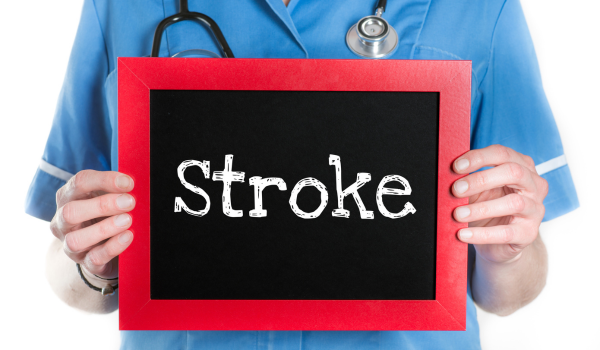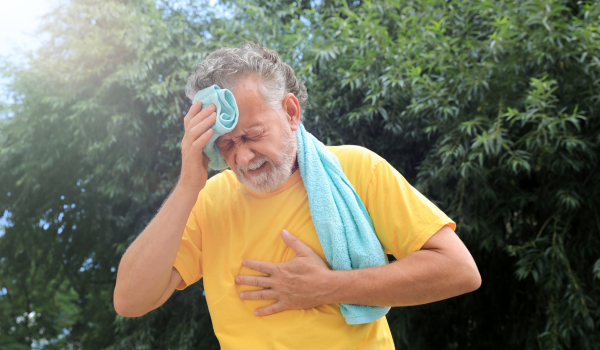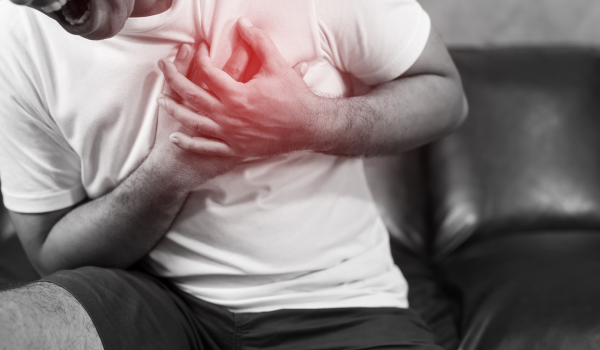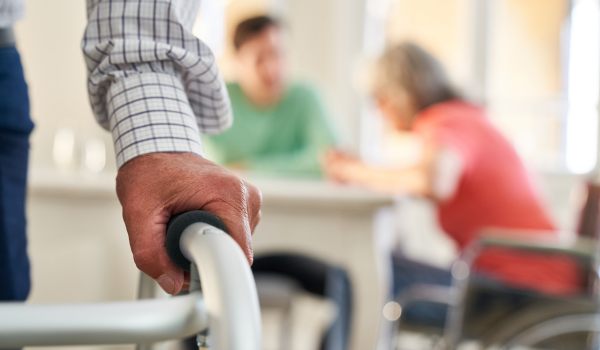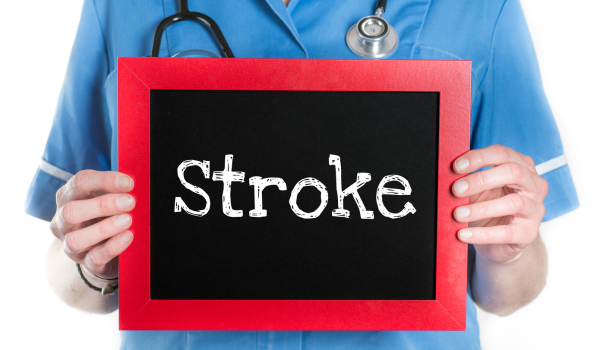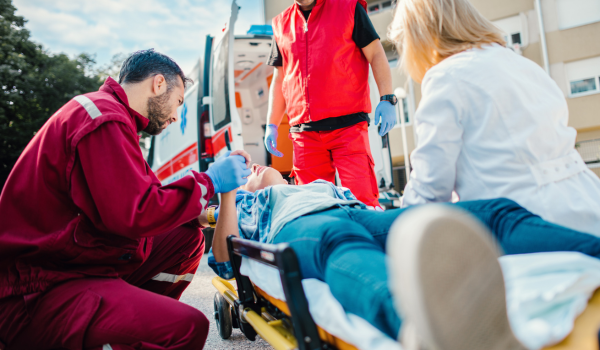.png)
Why Stroke Awareness Matters
Stroke is a medical emergency that can strike at any time, often without warning. Recognizing its signs and acting quickly can mean the difference between a full recovery and permanent disability—or even death. Despite advances in medical science, stroke remains one of the leading causes of death and long-term disability worldwide.
Knowing the common symptoms of stroke and taking immediate action can dramatically improve outcomes. This guide outlines the key signs and what to do if they appear.
Facial Drooping
One of the most recognizable signs of a stroke is facial drooping. It often affects only one side of the face.
What to Look For:
-
One side of the face appears to sag or is expressionless
-
The person may be unable to smile evenly
-
Their eye or mouth may droop
-
The droop may worsen when trying to smile or speak
This is caused by weakness or paralysis of facial muscles due to impaired blood flow in the brain.
Arm Weakness
Stroke can cause sudden weakness or numbness in one arm—or both. This often occurs on one side of the body.
What to Look For:
-
The person can't lift one arm as high as the other
-
They may feel tingling, heaviness, or total numbness
-
Their arm may drift downward involuntarily
Ask the person to raise both arms. If one drifts or falls, it’s a strong indicator of stroke.
Slurred or Strange Speech
Sudden speech difficulty is a hallmark of stroke. It may present in different ways depending on the area of the brain affected.
What to Look For:
-
Slurred or garbled speech
-
Trouble finding words or forming coherent sentences
-
Inability to understand speech or respond correctly
Ask the person to repeat a simple sentence. If they slur, use the wrong words, or struggle to form words, act immediately.
Vision Changes
Stroke can impact the part of the brain that controls vision, leading to temporary or lasting problems.
What to Look For:
-
Sudden blurred vision
-
Partial or complete loss of sight in one or both eyes
-
Double vision or difficulty focusing
Visual disturbances are often overlooked but may be an early warning sign of an impending stroke.
Sudden Severe Headache
Not all strokes cause pain, but a sudden, intense headache can indicate a hemorrhagic stroke or aneurysm.
What to Look For:
-
A headache that appears "out of nowhere"
-
Described as the “worst headache ever”
-
Accompanied by nausea, vomiting, or dizziness
This symptom requires urgent emergency evaluation.
Loss of Balance or Coordination
Stroke can affect the brain’s ability to control movement, posture, and coordination.
What to Look For:
-
Dizziness or lightheadedness
-
Trouble walking or standing
-
Falling or unsteady movements
-
Difficulty with fine motor skills
These signs may appear alone or with other symptoms like numbness or vision changes.
Confusion or Disorientation
Sudden cognitive changes are common, especially in older individuals or those with prior brain injuries.
What to Look For:
-
Trouble understanding conversation
-
Difficulty following simple instructions
-
Inappropriate behavior or confusion about time and place
Mental confusion can signal damage to the brain's communication centers.
Numbness or Tingling
Stroke often causes sudden numbness, especially on one side of the body.
What to Look For:
-
Numbness in the face, arm, leg, or torso
-
Tingling or a “pins and needles” sensation
-
Feeling of “dead weight” in the affected limb
Numbness is a direct result of disrupted nerve signals due to loss of blood flow.
Hiccups and Nausea (Less Common)
Though not as widely known, strokes can sometimes cause unexpected symptoms like persistent hiccups or unexplained nausea.
What to Look For:
-
Hiccups lasting more than a few minutes
-
Sudden nausea without digestive issues
-
Vomiting unrelated to food intake
These may occur more frequently in women and are often misattributed to other causes.
Seizures or Loss of Consciousness
Some strokes, especially hemorrhagic types, may lead to convulsions or fainting.
What to Look For:
-
Full-body seizures
-
Sudden collapse
-
No response to voices or touch
While less common, these are serious signs that require immediate medical attention.
Using the FAST Method
The FAST acronym is a lifesaving tool to help quickly identify stroke:
-
Face: Ask the person to smile. Does one side droop?
-
Arms: Ask them to raise both arms. Does one drift down?
-
Speech: Ask them to repeat a simple phrase. Is it slurred or strange?
-
Time: If you see any of these signs, call emergency services immediately.
The sooner treatment begins, the better the chances of recovery.
When to Call Emergency Services
Call emergency services right away if you suspect a stroke. Do not attempt to drive the person to the hospital yourself—EMS can begin treatment en route.
Every minute counts. For ischemic strokes, clot-busting drugs must be administered within a narrow window—usually 3 to 4.5 hours.
Symptoms in Women
Women can experience unique stroke symptoms in addition to the classic signs.
Additional Symptoms:
-
Sudden fatigue
-
General weakness
-
Shortness of breath
-
Chest pain
-
Palpitations
Women are more likely to overlook these subtle signs, increasing the risk of delayed treatment.
Symptoms in Younger Adults
Although stroke is often seen in older adults, younger people are not immune. Common causes in younger adults include:
-
Birth control pills
-
Migraines with aura
-
Smoking
-
Drug use
-
Blood clotting disorders
They may also present with typical signs, so awareness is vital regardless of age.
Stroke Mimics
Other medical conditions can mimic stroke symptoms, such as:
-
Seizures
-
Migraines
-
Low blood sugar
-
Bell’s palsy
Even if you’re unsure, it’s better to treat every situation as a potential stroke until a doctor rules it out.
Silent Strokes
Some strokes, especially in the elderly, can occur without any immediate symptoms. These are called silent strokes and are often discovered during brain scans for other reasons.
Even though no obvious signs appear, silent strokes can still cause brain damage and increase the risk of future major strokes.
Why Timing Is Critical
For every minute a stroke goes untreated, up to 2 million brain cells die. Delayed treatment increases the risk of:
-
Permanent disability
-
Loss of independence
-
Long-term cognitive deficits
-
Death
Recognizing and responding quickly to stroke symptoms is the best way to save brain function.
What Happens After Stroke
Recovery depends on the type, severity, and speed of intervention. Treatments may include:
-
Medications to dissolve clots or reduce pressure
-
Rehabilitation therapy (speech, physical, occupational)
-
Lifestyle changes to prevent recurrence
Early detection leads to better prognosis and shorter recovery times.
Long-Term Prevention
Reducing your risk of stroke includes:
-
Managing blood pressure
-
Quitting smoking
-
Controlling blood sugar and cholesterol
-
Exercising regularly
-
Eating a balanced, heart-healthy diet
-
Taking medications as prescribed
Preventing a first or repeat stroke is a long-term commitment.
Conclusion
Stroke symptoms can appear suddenly and vary widely, but they should never be ignored. Facial drooping, arm weakness, speech difficulties, and vision loss are common red flags. Others, like headache, confusion, or dizziness, may seem less urgent but can signal a life-threatening emergency.
The key takeaway? Know the signs. Act FAST. Save a life—maybe even your own.
.png)
.png)
.png)
.png)
.png)
.png)
.png)
.png)
.png)
.png)
.png)
.png)
.png)
.png)
